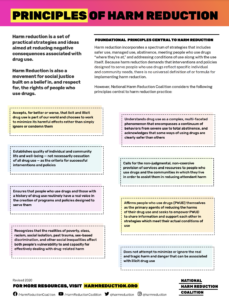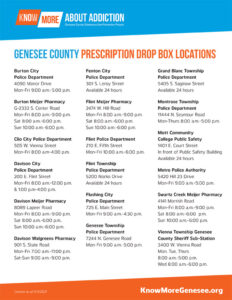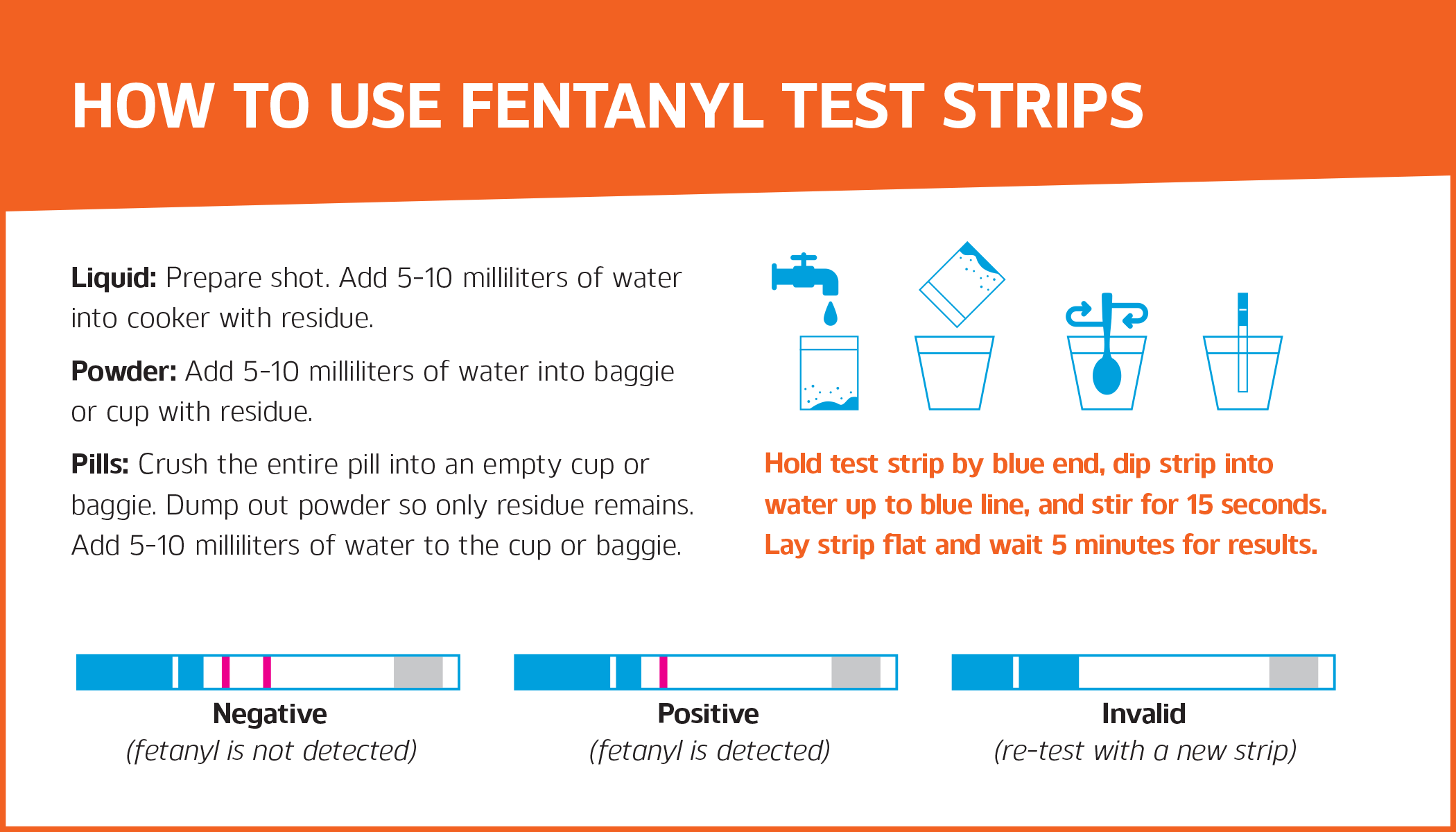Know More About Harm Reduction
What is Harm Reduction?
Harm reduction incorporates a spectrum of strategies that includes safer use, managed use, abstinence, meeting people who use drugs “where they’re at,” and addressing conditions of use along with the use itself.1
Because harm reduction demands that interventions and policies designed to serve people who use drugs reflect specific individual and community needs, there is no universal definition of or formula for implementing harm reduction.1
Syringe Service Program
Wellness Services, Inc. STEP Program
Access to sterile syringes, clean work kits, and other services available through Wellness Services, Inc.
311 E. Court St
Flint, MI 48502
(810) 232-0888
wellnessaids.org/syringe-access-and-overdose-education
Harm Reduction and Naloxone
Naloxone is a medicine that rapidly reverses an opioid overdose. It can quickly restore normal breathing to a person if their breathing has slowed or stopped because of an opioid overdose. During an overdose, a quick response can save a life. In order to prioritize saving lives, Michigan passed a Good Samaritan law in 2016, preventing drug possession charges against those that seek medical assistance for an overdose in certain circumstances.
Harm Reduction and Fentanyl
What is Fentanyl?
Fentanyl is a strong synthetic opioid that has been used in clinical settings for decades and is often described as 80-100 times stronger than morphine, or about 50 times stronger than heroin.3
Fentanyl moving through the street market comes in the form of a white, gray or tan powder and can be injected, smoked, or snorted. It has also been found in other drugs, like heroin, meth, cocaine, and pressed pills.3
Overdose deaths involving synthetic opioids were nearly 12 times higher in 2019 than in 2013. More than 36,000 people died from overdoses involving synthetic opioids in 2019.3 The latest provisional drug overdose death counts through May 2020 suggest an acceleration of overdose deaths during the COVID-19 pandemic.2
Fentanyl and Naloxone
Fentanyl and fentanyl analogues are opioids and will respond to naloxone in the event of an overdose. When it appears that someone overdosing is not responding to naloxone it may be because:
- the naloxone needs more time to take effect (wait 2-3 mins before administering more naloxone)
- they need more than one dose of naloxone (wait 2-3 minutes between doses)
- the naloxone was administered after the person had been without oxygen for too long3
Fentanyl Testing Strips
Fentanyl testing strips have recently emerged as a harm reduction best practice to help people using drugs determine if fentanyl or fentanyl analogues is present in their drug supply. Fentanyl testing strips are inexpensive ($1 each), easy to transport, and simple to use. The single-use strips work like other over-the-counter testing products: The user dips the strip into water containing a small amount of well-mixed drug residue and waits a few minutes for the result. The appearance of a single line signifies the presence of fentanyl or fentanyl analogues such as acetylfentanyl, and two red lines signifies its absence.4
Providing people who use drugs with the ability to test their drug supply for the presence of fentanyl or fentanyl analogues empowers them to make informed decisions regarding the use of their supply. It also empowers them to plan safer use practices, such as having Naloxone on hand and/or using in the presence of others.
Genesee County Locations Providing Fentanyl Testing Strips
Grand Blanc Township Police Department
5405 Saginaw Rd
Flint, MI 48507
(810) 424-2611
Hamilton Community Health Network – Center For Hope location only
812 Root St
Flint, MI 48503
(810) 406-4246
New Paths, Inc.
765 E. Hamilton Ave
Flint, MI 48505
(810) 233-5340
newpaths.org
Sacred Heart Rehabilitation Center
2091 Professional Dr
Flint, MI 48532
(810) 732-1652
Wellness Services, Inc.
311 E. Court St
Flint, MI 48502
(810) 232-0888
wellnessaids.org/syringe-access-and-overdose-education/






